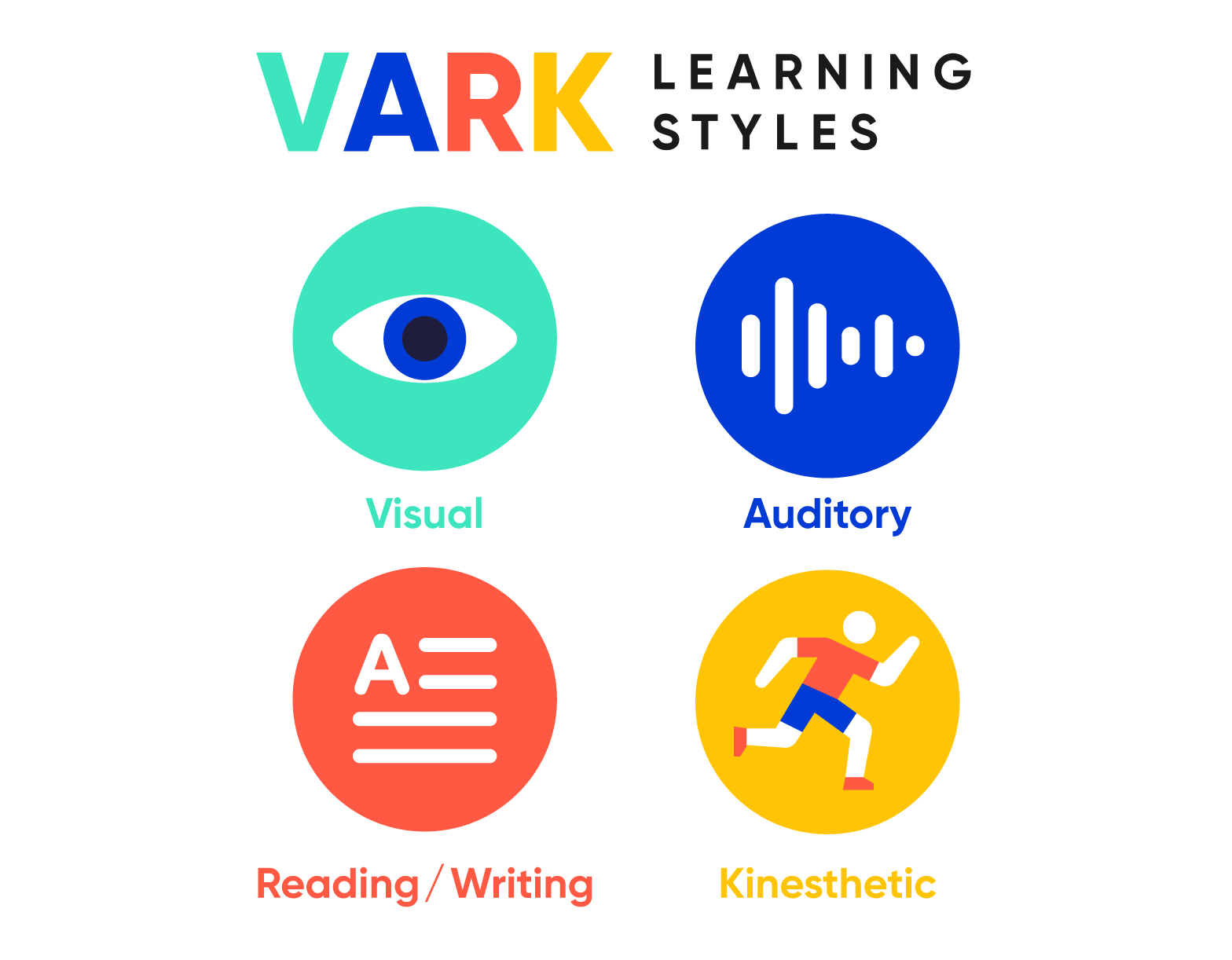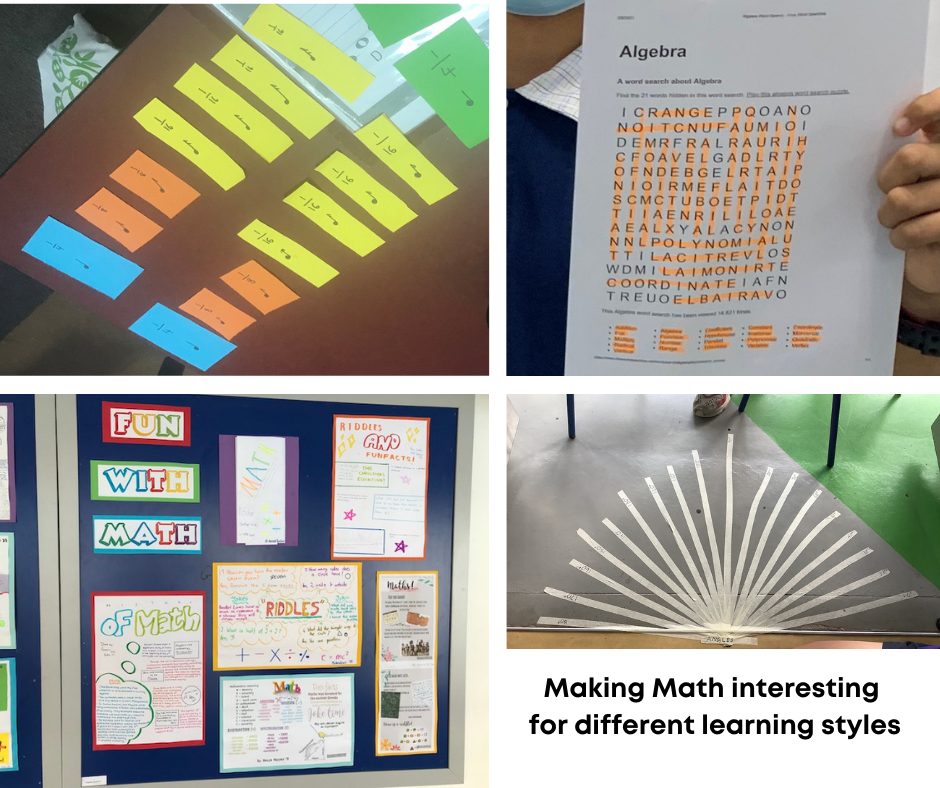
It’s true that learning mathematical concepts at the Secondary school level requires work. But Math should be exciting, not tedious. For many older children, the struggle with Math begins with how it’s presented.
In some ways, children and teenagers are like Christmas cookies — designed using different dough and differently shaped cutters. Some are crisp stars or snowflakes, all sparkly with crystalline sugar.
Others are soft and pliable drop cookies full of chocolate chips or raisins. Of course, all are equally good, but they all have their own properties and characteristics.
Just as no two cookies taste the same, no two children master concepts in the same way. Instead, each has a learning style that’s unique to them.
And to unlock the joy of learning, it falls on the teacher (and the parent) to understand each learning style and build upon it!
What is the VARK Model?

VARK is an acronym for Visual, Aural, Read/Write, and Kinesthetic sensory modalities. It all sounds very complicated. However, it simply means that while some people learn best by seeing and digesting information visually, others do better by hearing, reading, or writing about it.
No one modality is wrong or better than another. By contrast, all are effective ways of taking in information, processing it, and then applying it to real-life situations.
If a teenager who learns best by seeing examples is forced to learn only by listening to a dry lecture, they may have difficulty mastering the concept being presented.
The VARK model was developed, or some may say discovered, by Neil D. Fleming and Colleen Mills, both of Lincoln University in New Zealand. It was first published in 1992 as part of a paper titled, Not Another Inventory, Rather a Catalyst for Reflection. It breaks learning styles down into four basic categories:
1) Visual Learning: This type of student learns best through the use of visual references, such as diagrams, charts, or symbols.
2) Aural/Auditory Learning: Some students learn best by listening to podcasts etc. They may also be better able to work through problems by talking them through orally.
3) Reading/Writing: Students who favor this learning style prefer reading or writing text, including slide presentations, essays, or book reports.
4) Tactile or Hands-On Learning: Tactile learners want to touch items to learn more about them. They desire hands-on contact and movement.
By matching the correct learning style to the student, teachers make it much easier for children to master concepts and to enjoy the learning process as they go.
Considering Learning Styles to Make Math Interesting

An effective Math teacher uses various methods of teaching to reach all students in their class. This may include techniques such as:
- Using Math manipulatives that learners can touch and handle
- Allowing students to organize information using bars, columns, lines, pies, or graphs
- Taking the Math class outdoors where learners are free to move about and pace off distances, measure angles and apply formulas in the outdoor world context.
- Encouraging children to make real-life mathematical connections, such as using fractions in a recipe, tapping out the rhythm in a bar of music, or using Math to balance a fictional checking or savings account.
- Introducing word problems
- Allowing students to work together in groups to find mathematical solutions
There are so many ways to teach Math that are fun and engaging and that move beyond simple chapters in a textbook. A highly effective teacher will find and make use of them all, including the possibilities of using the VARK Model.
In this way, every learning style is addressed, and ideally, a child who can’t master a mathematical concept in one way will succeed in another.
How Parents Can Make Math Meaningful at Home

Your child’s experiences at home are important, too. There is a lot that parents can do to make math fun and exciting in a home environment as well.
For example, you might try putting older children in charge of the family budget or make them responsible for balancing a checkbook. Reinforce the study of fractions by encouraging children to follow recipes to bake cakes or pies.
Or institute a token system of payment for household chores, and make children responsible for figuring out how much money they’ve earned in a week.
When you travel, use travel math to help your child work out how long it will take to arrive at the destination if you’re traveling at the speed limit. And use supplemental, hands-on resources, such as flashcards to help cement memorization.
If you can make solid connections between math and its applications in the real world, children will find it easier to stay engaged. And engagement is key to learning. If a child enjoys what they’re doing, they’ll want to keep doing it, even if the subject is mathematics.
How OWIS Gives Importance to Rigour and Learning Styles in Math

One World International School offers the IB PYP, Cambridge IGCSE and IB DP academic pathway. Math at the Secondary level is treated as a subject that requires real-world context for optimal student engagement.
While academic rigour is nurtured through the curricula, student-led learning is the norm. Teachers encourage questions in the classroom as well as creativity in finding the solution to problems.
Class sizes are kept small to allow dynamic teacher-to-student interaction, and learning styles are catered to through special events, such as Maths Morning.
Parent input is important, too. As such, families are kept up to speed with what’s going on in school. In this way, they can provide additional support and encouragement at home.
To learn more about how One World International School in Singapore can help your child build a lifelong interest in Math and other subjects, schedule a tour or contact an admissions counsellor today!
